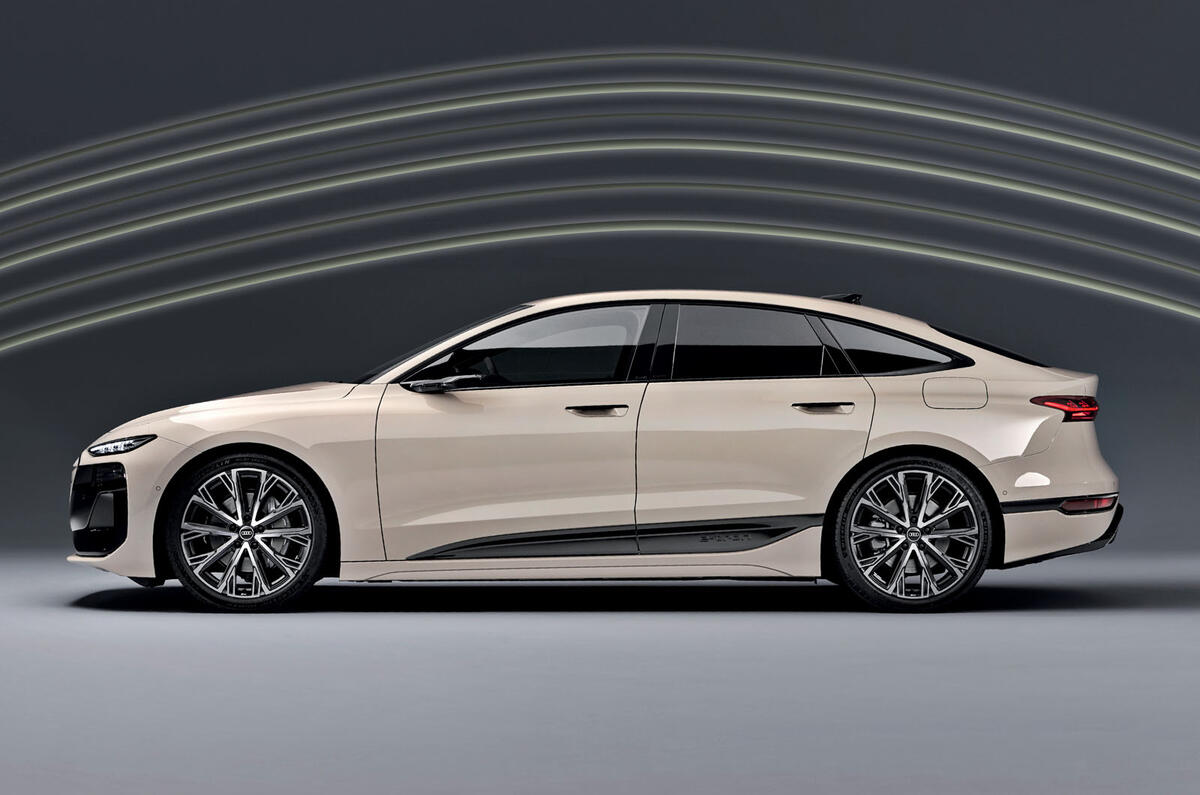The new A6 E-tron is not just Audi’s most aerodynamically efficient car yet but also one of the sleekest cars on the market – and that is crucial to its headline range figure of 466 miles.
The Sportback’s drag coefficient of 0.21 puts it on a par with the Hyundai Ioniq 6 and just below the Tesla Model S and Mercedes EQS, and it is a bellwether for a new era of range-chasing design and engineering at Audi.
Moni Islam, Audi’s head of aerodynamic and aeroacoustic development, said the A6 E-tron “establishes a new milestone in aerodynamics” for the firm, following in the footsteps of previous streamlined efforts such as the Auto Union Type C, NSU Ro 80, Audi A2 and Mk3 Audi 100, which was the most aero-efficient car of its time. “Vehicle aerodynamics has had kind of a renaissance in the last few years because of vehicle electrification,” said Islam.
He explained that around 40% of a car’s energy can be expended in overcoming air resistance – and it rises to nearer 60% at motorway speeds.
This is particularly pertinent with electric vehicles, where “you are using a third of the contents of the battery to overcome wind resistance”. However, he said EVs open up new opportunities to overcome this physical barrier.
“In the case of a vehicle with a combustion powertrain, we know they have a much lower thermal efficiency than electric powertrains,” said Islam, “so of the fuel that you have in the tank, a large proportion is expended in heat and only 10% of this energy can be actually used for overcoming the aerodynamic drag.
“So the difference in efficiency of the two powertrains is essential in emphasising the importance of aerodynamics.” Islam also highlighted that an EV traditionally has a completely flat floor that is relatively easy to optimise aerodynamically, whereas many components on an ICE car must be left exposed for cooling purposes, limiting what can be done to direct airflow.
This is why Islam and his team have been involved from the outset in the development of Audi’s new PPE platform – used by the A6 and Q6 E-tron – working with designers and engineers to maximise the efficiency of the cars using it.
Active shutters
When the radiator does not need cooling, front grille flaps shut to send air over and beneath the car to add more than seven miles of range.
Air curtain
Air channels in the front wings “bring the flow in a very efficient and controlled manner around this sharp corner and make sure that it interacts optimally with the wheels”.








Join the debate
Add your comment